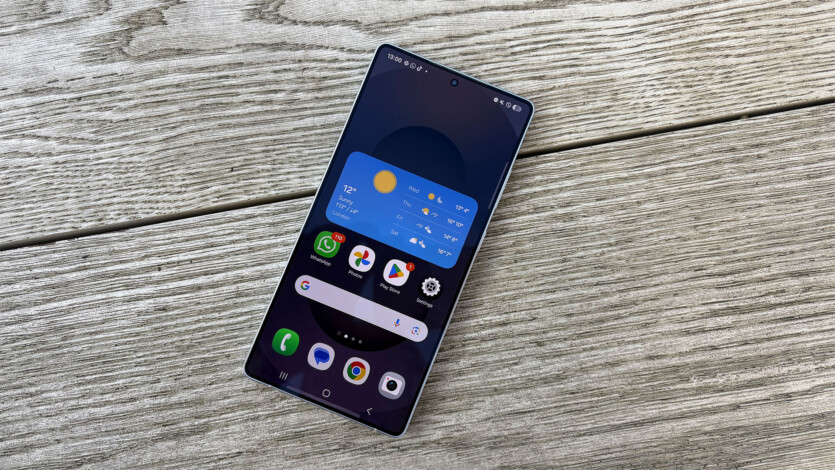
Choosing a smartphone today is like choosing between a lavender raffa and a classic Americano: on the one hand, it’s stylish and fragrant, on the other hand, it’s simple, reliable, and without any unnecessary hassle. The market is full of models that try to be «lavender raff», but sometimes you just want an Americano — something that works and doesn’t let you down. In this TOP, we have collected smartphones for different tastes and needs. In our opinion, they are really worth your attention. We look forward to hearing your suggestions for the best model in each category in the comments.
Content
- 1 Selection criteria
- 2 The best all-in-one smartphone — Motorola Moto G75
- 3 The best photo flagship — Sony Xperia 1 VI
- 4 The best iPhone — iPhone 16 Pro Max
- 5 The best flagship on Android — Samsung Galaxy S25 Ultra
- 6 The best gaming smartphone — Asus ROG Phone 9 Pro
- 7 The best standalone smartphone — OnePlus 13
- 8 The best budget smartphone — OPPO A3x
- 9 The best compact smartphone — iPhone 16e
- 10 The best smartphone for a child — Samsung Galaxy A25
Selection criteria
Processor and performance
In 2025, the top processors are the Snapdragon 8 Elite and Apple A18. They offer high performance, energy efficiency, and support for the latest technologies such as ray tracing and AI. For everyday use, mid-range processors such as the Snapdragon 7 Gen 3 or MediaTek Dimensity 8200 are sufficient.
Camera
The number of megapixels is no longer the main indicator of camera quality. Pay attention to the size of the sensor, the aperture of the lens, the presence of optical stabilization, and the ability to shoot in low light. In 2025, smartphones will offer improved night photography, RAW shooting, and support for 8K video. And, of course, artificial intelligence post-production.
Battery and charging
Most smartphones are equipped with batteries with a capacity of 4500 to 6000 mAh, which is equal to a day of active use. Fast charging with a power of 65-120 W allows you to charge the device up to 100% in 30-40 minutes. Pay attention to the support for wireless and reverse charging.
Display
AMOLED displays with a refresh rate of 120-165 Hz have become the standard for the mid-range and premium segments. They deliver vivid colors, deep blacks, and smooth animations. High refresh rates and low sensor latency are important for gaming smartphones.
Communications and networks
5G support has become mandatory even for budget models. It’s another matter when the network is deployed in our latitudes. Also look for Wi-Fi 6E, Bluetooth 5.3, and NFC for contactless payments.
Protection and materials
Smartphones with an IP68 rating are protected from dust and water, which is important for active users. Aluminum and glass cases offer a premium look but can be fragile. Plastic cases are lighter and less prone to breakage.
Size and ergonomics
Although large screens are convenient for multimedia, not all users are looking for «spades». Compact smartphones are convenient for one-handed use, easily fitting into a pocket. This format brings comfort and convenience back to everyday use.
The best all-in-one smartphone — Motorola Moto G75
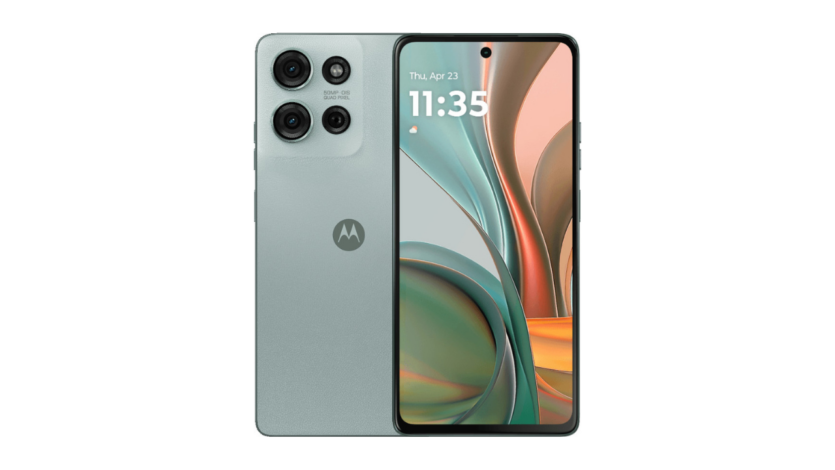 Motorola Moto G75 — a smartphone not for pomp, but for life. It doesn’t have a flexible screen or a titanium body, but has everything you really need. A good display, a long-lasting battery, decent cameras, and a nice price. Everything is uncluttered, but smart.
Motorola Moto G75 — a smartphone not for pomp, but for life. It doesn’t have a flexible screen or a titanium body, but has everything you really need. A good display, a long-lasting battery, decent cameras, and a nice price. Everything is uncluttered, but smart.
The display here is large — 6.78 inches, with Full HD+ resolution and 120 Hz frequency. It’s not OLED, but the IPS matrix is not bad: the brightness is enough to avoid squinting in the sun, and the speed is — to scroll through TikTok without friezes. The case is plastic, but with normal protection — IP68 and even some kind of army MIL-STD. That is, if it falls into a puddle or hits the door a little, it will survive.
The Snapdragon 6 Gen 3 processor is not a flagship, but it does a good job. Everything works stably: social networks, instant messengers, photos, even Genshin Impact pulls (on medium, but stable). The RAM is — 8 GB, the storage is — 256 GB, and there is a microSD slot. For the middle class — ok.
Cameras Motorola Moto G75 — not cinematic, but good for the money. Main — 50 megapixels with optical stabilization. It shoots well during the day, tolerably at night. There’s also an 8-megapixel wide-angle camera so that all your friends can fit in the frame. The front-facing camera is 16 megapixels, video is up to 4K 30 fps. Nothing extraordinary, but honest and stable.
The 5000 mAh battery is a Motorola classic. It lasts a day and a half, even if you don’t let go of the phone. Charging — 30 W via wire (although it could be a little faster), plus there is wireless charging at 15 W, which is a plus. It’s pure Android 14 here, no ads and no extra junk.
Motorola Moto G75 — option «bought and use». Nothing fancy, but everything you need is there: a large screen, a decent camera, a day-and-a-half battery, adequate performance, and even wireless charging. Price — from 9,599 to 10,070 hryvnias.
The best photo flagship — Sony Xperia 1 VI
Sony continues to play its — game and tries to squeeze the DSLR into your pocket again Xperia 1 VI — a smartphone that seems to have been created by engineers from the α-series camera department after a long meeting with fans of manual settings. This device is for those who like to take pictures, tinker with settings, and don’t trust automation and AI.
The main camera here are 48 megapixels with a large Exmor T-sensor and touch stabilization. But the most interesting thing is the periscopic zoom, which gives a real 3.5-7.1x zoom without losing quality.
Add in an ultra-wide lens, a 4K video front-facing camera, and professional shooting modes — and you’ve got a Sony A7 in a compact body.
Snapdragon 8 Gen 3 processor — expected power. But it’s nice to know that Sony added 12/16 GB of RAM, UFS 4.0, and a microSD slot, which most flagships seem to be shy of. The display is 6.5-inch OLED, 120 Hz, without 4K (for the first time for Xperia 1), but with good brightness and Creator Mode for those who shoot not only for Instagram but also for editing.
Everything is fair with the battery: 5000 mAh is enough for a day of active use, and there is both fast and wireless charging. And even reverse charging. The case is waterproof (IP65/IP68), stereo sound with Hi-Res Audio and a 3.5 mm — jack is already a real exotic in 2025. And yes, Android 14 — is clean, stable, not overloaded.
Of course it is, Xperia 1 VI — a smartphone is not for everyone. Although the camera is powerful, only a user who is willing to spend time setting it up will be able to unlock its full potential — «automatic» is not always at its best here. And although the display is good, the lack of 4K may be a bit disappointing for fans of previous models.
Sony Xperia 1 VI — a device for those who appreciate the balance of power and freedom in photos and videos. If you’re ready to sweat for the result, forget about Samsung and even iPhone. But be prepared to pay from 44,599 to 65,960 UAH for it.
The best iPhone — iPhone 16 Pro Max
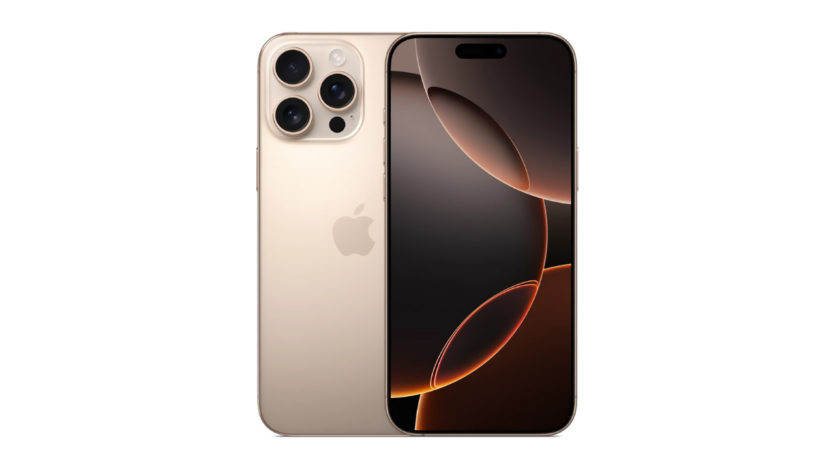 iPhone 16 Pro Max — is not a revolution, but a solid evolution of what Apple has long been good at. The powerful A18 Pro chip handles not only Instagram and TikTok, but also heavy games, video editing, and AI tools. The performance is — at the «turn it on and forget it» level: everything flies, nothing slows down.
iPhone 16 Pro Max — is not a revolution, but a solid evolution of what Apple has long been good at. The powerful A18 Pro chip handles not only Instagram and TikTok, but also heavy games, video editing, and AI tools. The performance is — at the «turn it on and forget it» level: everything flies, nothing slows down.
The cameras are top-notch. The main 48-megapixel sensor with updated optics and processing algorithms produces excellent photos even in difficult lighting conditions. The 5x periscopic zoom lens is decent camera replacement on vacation, especially for portraits. Photos in ProRAW, video in 4K60 ProRes — it’s all there, and it works like clockwork. But the features for professionals may not be used by the average user — the potential is huge, but not everyone will use it.
Display iPhone 16 Pro Max — a huge 6.9-inch Super Retina XDR OLED panel with a frequency of 120 Hz and a peak brightness of up to 2000 nits. It really impresses with its detail, black depth, and smooth animations. But the size is also appropriate — iPhone 16 Pro Max is not for weak wrists. It fits into a jeans pocket with difficulty, and using it with one hand is a challenge. The second-generation titanium has slightly reduced the weight, but the smartphone still feels massive.
The Battery iPhone 16 Pro Max lasts a full day of active use, even with cameras, games, and GPS. There is 35 W charging via wire and 15 W via MagSafe. But here again, Apple lags behind Android flagships: for the money, I would like to see at least 60 watts, not to mention 100+. And you’ll have to buy the charger separately — only a cable is included. Eco-friendly, remember?
iOS 18 brings new AI features (some of which are not yet available everywhere), stability, and traditional limitations: no customization like Android, no quick access to the file system, no support for microSD or two physical SIMs — only eSIM. On the one hand, security and stability, on the other hand, limited flexibility.
iPhone 16 Pro Max — a choice for those who want a premium smartphone without experiments: stable, powerful, durable. Not the cheapest, but with a guarantee that you won’t have to worry about it for another 5 years. Well, or until iPhone 17 Pro Max Ultra AI+.
The best flagship on Android — Samsung Galaxy S25 Ultra
Inside Samsung Galaxy S25 Ultra — the newest Snapdragon 8 Gen 4 for Galaxy, created on a 3nm process. Although the name is a bit long, the result is short — everything flies. AI photo processing? Instantly. Editing 4K video? It’s a breeze. Games at maximum performance? Yes, even Genshin doesn’t heat it up to a frying pan. 12 GB of RAM and up to 1 TB of storage — because why not?
The screen in Samsung Galaxy S25 Ultra traditionally uncompromising: 6.9″, Dynamic AMOLED 2X, with a resolution of 3120×1440, a frequency of 1-120 Hz and a brightness that can blind you. Gorilla Glass Armor, an ultrasonic scanner under the screen, and S Pen support – everything you’d expect from a good flagship. And also — thinner bezels and a new «flat-edge» design, because Samsung finally remembered that not everyone likes rounded edges.
Cameras? It’s serious: 200 megapixel main shooter, improved ISOCELL HP2SX sensor, a new 50 megapixel periscopic module with 5× optics, 50 megapixel ultra-wide and 10 megapixel telephoto 3×. Plus, a new AI zoom — not magic, but TikTok will already have something to show. Video — 8K60, HDR10+, and stabilization that compensates even for shaking after three mornings of coffee.
Battery life Samsung Galaxy S25 Ultra — 5000 mAh, 45W charging (yes, finally!), wireless — 25W, reverse — yes. IP68, titanium body, One UI 7 with new AI features: real-time translation during a call, text summarization, etc.
Samsung Galaxy S25 Ultra — The Android flagship, which is hard to beat. It’s still big and expensive, but if you’re looking for a smartphone «with years to spare», without compromise in any aspect — here it is. You can buy it for between 41,290 and 65,960 hryvnias if you want to forget about upgrading until 2029.
The best gaming smartphone — Asus ROG Phone 9 Pro
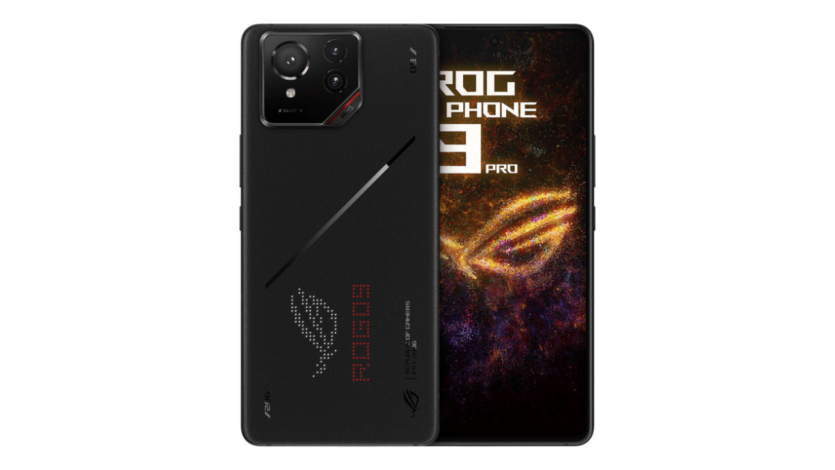 ROG Phone 9 Pro — a pocket-sized gaming station with everything you need for serious mobile gaming. It features a Snapdragon 8 Elite chip with a thermal cooling system that allows you to play for hours without trotting or overheating. It has 16 GB of RAM and 512 GB of storage, so it’s enough for heavy games and 4K video, and it’ll have enough storage for a couple of seasons of TV shows.
ROG Phone 9 Pro — a pocket-sized gaming station with everything you need for serious mobile gaming. It features a Snapdragon 8 Elite chip with a thermal cooling system that allows you to play for hours without trotting or overheating. It has 16 GB of RAM and 512 GB of storage, so it’s enough for heavy games and 4K video, and it’ll have enough storage for a couple of seasons of TV shows.
Display ROG Phone 9 Pro — a separate song. The 6.78-inch AMOLED panel, FHD+ resolution, 185 Hz refresh rate, and 720 Hz sensor. It’s a pleasure to play on this. The colors are rich, the response is instantaneous, black is really black, and the smoothness of the animations is so smooth that even the iPhone will be jealous. In addition, Asus has added AirTriggers side ultrasonic buttons that can be customized for games — in fact, it’s two more additional gamepads right on the case.
Battery ROG Phone 9 Pro The battery doesn’t disappoint here either, with a capacity of — 5800 mAh, which allows you to play for up to 8-10 hours without recharging. And even when the battery does die, a 65W fast charge will bring the device back to life in less than an hour. There are also features such as GameCool 9, an optional AeroActive cooler, and detailed settings in Armory Crate — mode, where each game can be optimized individually.
Everything is fair with the cameras: the main 50-megapixel shooter (Sony IMX890) produces decent quality in daylight, but ROG Phone 9 Pro is not about photos. This is a smartphone for those who want to squeeze the most graphics, FPS, and fun out of Genshin Impact, Call of Duty Mobile, or Diablo Immortal.
ROG Phone 9 Pro — definitely not a smartphone «for every day». This is a tool for gamers who want the best: the fastest screen, the most powerful hardware, the best battery life, and uncompromising control in the game. The price of the gadget ranges from 38,510 to 80,706 UAH.
The best standalone smartphone — OnePlus 13
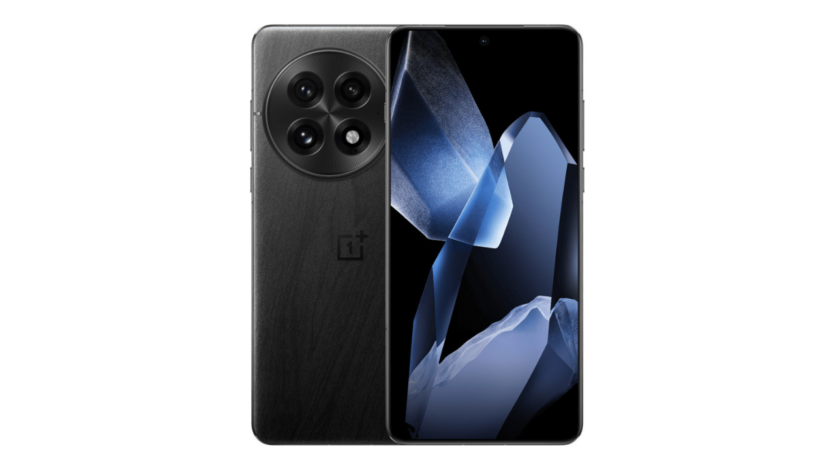 OnePlus 13 — a smartphone that has finally started thinking seriously about battery life. It has a huge 6000 mAh battery, but you don’t feel like you’re holding a brick: the manufacturer has distributed the weight well, and the smartphone doesn’t feel too heavy or uncomfortable.
OnePlus 13 — a smartphone that has finally started thinking seriously about battery life. It has a huge 6000 mAh battery, but you don’t feel like you’re holding a brick: the manufacturer has distributed the weight well, and the smartphone doesn’t feel too heavy or uncomfortable.
With normal use (YouTube, messengers, navigation), it can easily withstand two days of use — and this is not an advertising fairy tale, but a proven fact. Although in your pocket, such a gadget feels like 6.82 inches.
The Snapdragon 8 Gen 3 (or Elite Edition) is not only powerful, but also frugal with battery. And what’s interesting — even at maximum graphics load OnePlus 13 does not turn into a toaster. Everything works smoothly and almost without trotting: heavy games, camera, and multitasking. Fast charging — 100 W via a wire. Yes, wireless charging is also available — 50 watts.
Display — 6.82 inches, AMOLED, 1440p, 120 Hz, LTPO. Consumes less power thanks to adaptive refresh rate. Peak brightness — up to 4500 nits. Also — it is one of the first screens to be certified by TÜV Rheinland for ultra-low levels of harmful blue light. The downside? The curved edges of the display can cause accidental taps — a classic problem with the series.
The cameras are serious here: 50 megapixel main shooter with OIS, 50 megapixel ultra-wide, 50 megapixel telephoto with 3x optical zoom. As always, OnePlus — has Hasselblad calibration so that photos look like an expensive camera, not an overexposed filter. However, night photography is still inferior to the leaders — the same Pixel or Galaxy Ultra, especially in the detail of dark areas.
OnePlus 13 — the choice for those who want a modern flagship without compromising on battery life. But if you want the best camera or a complete ecosystem, you’ll have to look at Samsung or Apple. The price of the smartphone is from 25,999 to 44,299 UAH.
The best budget smartphone — OPPO A3x
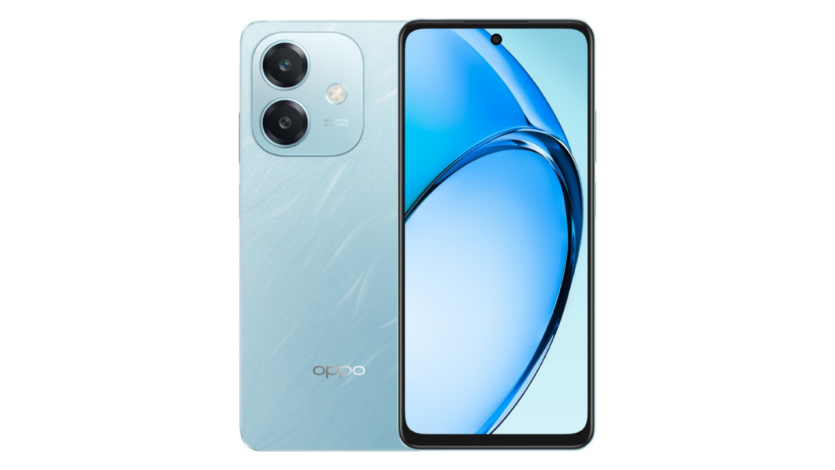 OPPO A3x — one of those state employees who do not annoy. And in 2025, this is already a compliment. It doesn’t shout about itself with its design, doesn’t try to be a «flagship killer», but honestly does its job: it calls, takes photos, pulls in social media, and doesn’t turn off for an hour. And all this for a reasonable price.
OPPO A3x — one of those state employees who do not annoy. And in 2025, this is already a compliment. It doesn’t shout about itself with its design, doesn’t try to be a «flagship killer», but honestly does its job: it calls, takes photos, pulls in social media, and doesn’t turn off for an hour. And all this for a reasonable price.
У OPPO A3x 6.67-inch IPS screen with a frequency of 90 Hz — yes, it’s not AMOLED, but the picture is smooth and bright enough to read from the screen under the sun. The smartphone is powered by a Qualcomm Snapdragon 6s 4G Gen1 chip — it’s not a performance record holder, but it’s enough for messengers, browsing, YouTube, and light games. It has 4 GB of RAM, 128 GB of storage, and a memory card slot.
Camera OPPO A3x The camera is simple: 8 megapixels at the main camera and 5 megapixels at the front. You shouldn’t expect anything cool, but it’s fine for taking pictures of documents, mementos, and social media. The main feature is the 5100 mAh battery, which can easily last a day and a half to two days without recharging. And there’s also 45W fast charging, which is a plus.
Of course, in OPPO A3xThere are also disadvantages: an old processor, a mediocre camera at night, a plastic body, and no NFC.
But if your budget is limited and you need a reliable device without glitches — OPPO A3x is definitely worth a look. This is an example of how to make an inexpensive smartphone without pain for the user at a price of 4,029 to 6,398 UAH.
The best compact smartphone — iPhone 16e
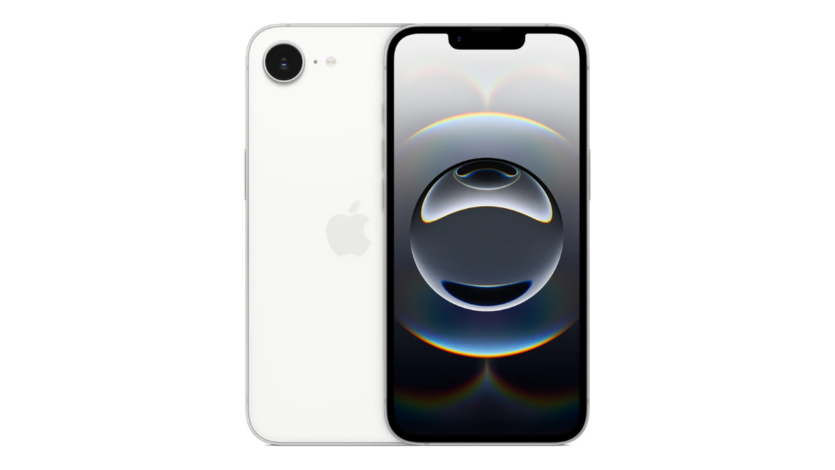 iPhone 16e — a variation on Apple’s classic approach to smartphones: minimal bells and whistles, maximum stability for the money. Its 6.1-inch OLED display remains comfortable for one-handed use — a rarity in the world of giant «shovel»s that currently dominate the market. And although it’s hardly compact (6 inches — not 4.7), this format has become the «gold standard» for those who don’t want a smartphone as small as a brick.
iPhone 16e — a variation on Apple’s classic approach to smartphones: minimal bells and whistles, maximum stability for the money. Its 6.1-inch OLED display remains comfortable for one-handed use — a rarity in the world of giant «shovel»s that currently dominate the market. And although it’s hardly compact (6 inches — not 4.7), this format has become the «gold standard» for those who don’t want a smartphone as small as a brick.
The A18 processor (the same as in older models) does iPhone 16e Not just fast — very fast. The system doesn’t lag or freeze, and even playing mobile games or editing videos in iMovie is no problem. Of course, there is no ProMotion display, as in older models, but 60 Hz is more of an Apple limitation than a technical need. Everything works smoothly, although there is less of a «wow effect».
Camera iPhone 16e 48 megapixel camera without a telephoto lens — a compromise. It takes great pictures, especially in daylight, the detail is good, and the night mode works well. But you’ll have to forget about the optical zoom. Such savings are not critical for most users.
Body iPhone 16e remains aluminum, so it is lighter and simpler than the titanium in the Pro line. Autonomy — for a day of active work, but no more: 4005 mAh is not much, and you’ll have to charge it every night. Fast charging is not fast either — 20 watts looks pale against the background of Android competitors.
iOS 18 works stably, and updates are guaranteed for at least 5-6 years. Type-C — is finally here, making life easier for everyone who is tired of Lightning. But the Always-On display, Dynamic Island, and ProMotion are not here.
iPhone 16e — a great choice for those who want an iPhone but don’t want to pay for a titanium body, extra cameras, and marketing gimmicks. And although it’s not cheap, its «longevity», compact format, and Apple support make it an investment for several years. Its cost is from 24,009 to 37,999 hryvnias.
The best smartphone for a child — Samsung Galaxy A25
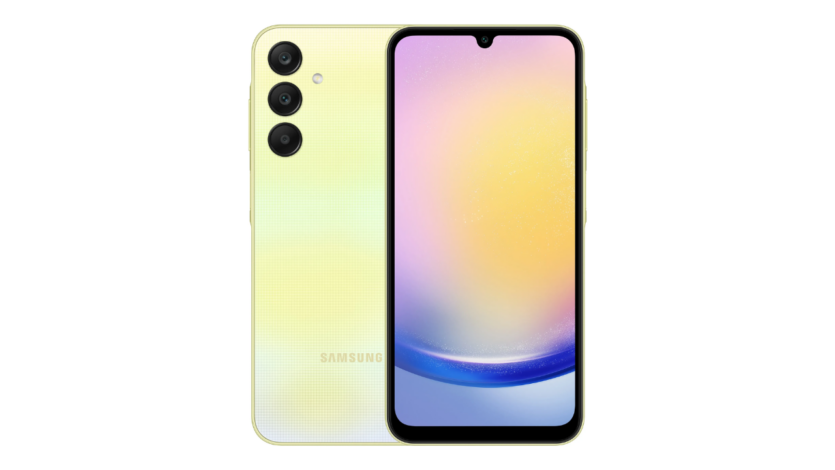 Samsung Galaxy A25 — a good option for those looking for a simple and reliable smartphone for a child or teenager. There are no unnecessary bells and whistles, but everything you need is there. The 6.5-inch Super AMOLED screen with 120 Hz refresh rate looks bright and clear, and your child will be able to watch videos, scroll through social media feeds, or play games without any problems.
Samsung Galaxy A25 — a good option for those looking for a simple and reliable smartphone for a child or teenager. There are no unnecessary bells and whistles, but everything you need is there. The 6.5-inch Super AMOLED screen with 120 Hz refresh rate looks bright and clear, and your child will be able to watch videos, scroll through social media feeds, or play games without any problems.
Battery Samsung Galaxy A25 5000 mAh will definitely give you a day of active or a couple of days of moderate use, which is convenient for a child — you don’t have to ask to put the phone on charge every night. The cameras are average: the main 50 megapixel camera with optical stabilization takes good photos, but don’t expect miracles at night. There is also an ultra-wide and macro — for children’s experiments with photography, which is enough.
Processor in Samsung Galaxy A25 is not top-of-the-line, but it’s enough for social networks, YouTube, and even simple games. The 6/128 GB memory is enough. Plus, Android with a minimum of bloatware — works quickly, without brakes.
Cons Samsung Galaxy A25 — the case is plastic and seems to be budget, but for a child it’s even a plus — it’s not so scary if it falls.
Samsung Galaxy A25 for a child — without unnecessary complications, with a good screen and long battery life. This option is worth considering at a price of UAH 7,973 to 11,083.

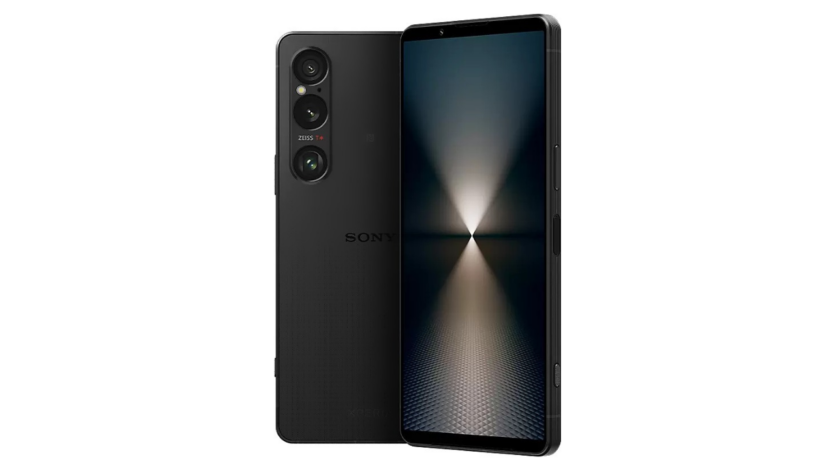
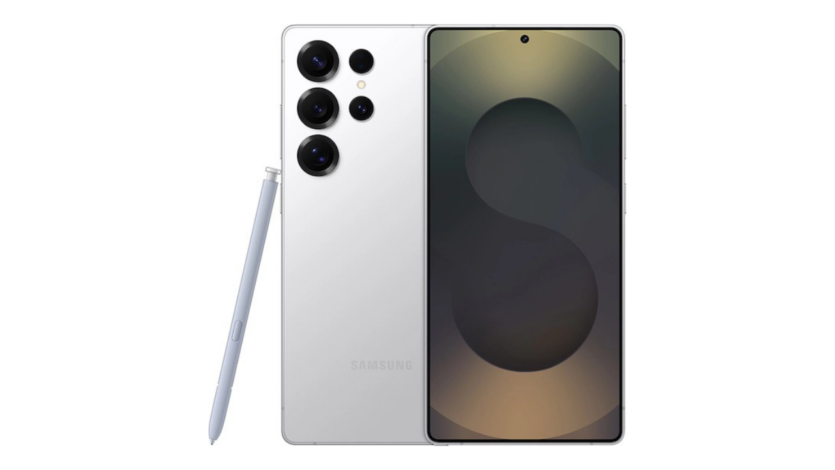
Spelling error report
The following text will be sent to our editors: